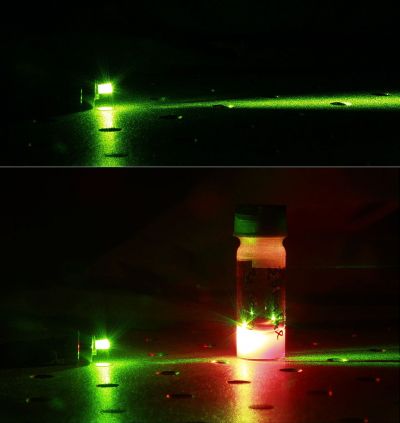Lasers emitting green light currently have limited efficiencies, power and lifetimes. EU-funded scientists have made important progress towards novel technology that could change that in the near future.
The crystalline semiconductor gallium nitride (GaN) has opened the door
to realize green lasers thanks to its unique optoelectronic properties.
Indium GaN (InGaN) devices operating in the green spectral range region
(wavelengths around 510 to 570 nm) are the result. However, despite
recent progress, high-quality InGaN light-emitting and laser diodes
(LEDs) are very difficult to produce.
EU-funded scientists tackled the technical basis for the deficiencies through the project
SINOPLE.
The team focused on the use of molecular beam epitaxy (MBE) to deposit
In-rich InGaN active layers onto nearly dislocation-free GaN single
crystals. Incorporating high levels of In, a prerequisite for the green
emitters, had not been achieved previously by MBE and there was no
detailed knowledge of In-rich InGaN/GaN heterostructures.
Researchers achieved epitaxial growth of InGaN with high In content
(up to 20 %) on various substrates using MBE. Scientists also had
success exploiting InGaN on zinc oxide. On the road to device
development, the team also produced a highly sensitive method to
characterise In fluctuation based on transmission electron microscopy
with unprecedented accuracy.
Investigators delivered a variety of lasers in the ultraviolet, blue
and green spectral ranges. The novel MBE system facilitated growth of
higher-quality InGaN and produced a record for electrically pumped
nitride MBE laser diodes with wavelength emission at 482 nm.
Additionally, the team produced continuous-wave laser diodes with a
wavelength of 450 nm, a power of 60 mW and a lifetime exceeding 5 000 h.
The result shows that MBE can compete with conventional metal organic
chemical vapour deposition (MOCVD). In addition, the technique
facilitates flexibility in processing temperature and substrates that
are not accessible with MOCVD.
SINOPLE has significantly advanced the state of the art regarding
production of green LED lasers with higher efficiencies, power and
lifetimes. The application potential is enormous for this elusive
coherent-light source. From information displays to televisions to
biomedicine, the world is on the brink of an eye-opening surprise.

